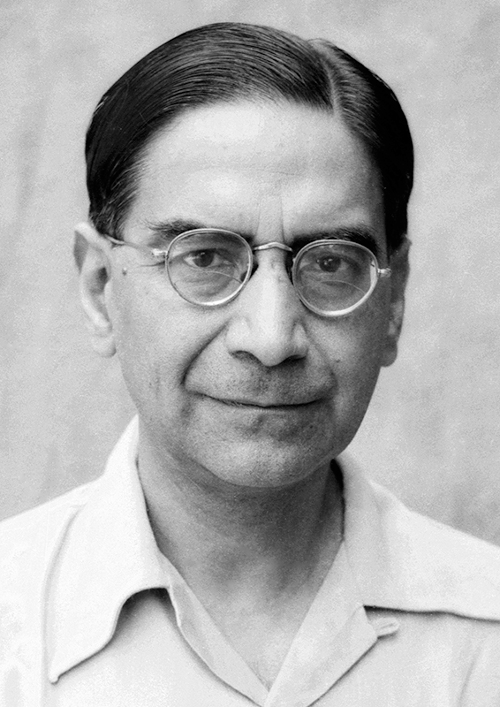Mahalanobis's Approach: Addressing India's Big Data and AI Challenges | 01 Jul 2023
For Prelims: National Statistics Day, Prof. Prasanta Chandra Mahalanobis, Big Data, Artificial intelligence, Padma Awards, Second Five-Year Plan, Digital India, Kautilya's Arthashastra.
For Mains: Insights from Mahalanobis's to Tackle India's Big Data and AI Challenges
Why in News?
India celebrated National Statistics Day on June 29th, commemorating the birthday of Prof. Prasanta Chandra Mahalanobis, renowned as the 'Plan Man' of India.
- As India grapples with the challenges of Big Data and the transformative power of artificial intelligence (AI), reflecting on Mahalanobis's approach can offer insights into addressing these issues effectively.
What are the Major Contributions of PC Mahalanobis?
- About:
- Professor P.C. Mahalanobis, a prominent scientist and statistical pioneer, contributed significantly in the field of data collection, analysis, and planning for national development.
- He was born in Calcutta (now Kolkata). His grandfather Gurucharan was a social reformer and a follower of Debendranath Tagore, the father of Rabindranath Tagore.
- Major Contributions:
- In 1931, he founded the Indian Statistical Institute (ISI) in Calcutta, with the aim of promoting research and education in statistics and related disciplines.
- He also founded Sankhya, the first Indian statistical journal, in 1933.
- In 1955, he was appointed as a member of the Planning Commission of India by Prime Minister Jawaharlal Nehru.
- He played a key role in designing India’s strategy for industrialisation and economic development in the Second Five-Year Plan (1956-61), also known as Mahalanobis Plan based on his own mathematical model that emphasized heavy industries and capital goods.
- Also, his involvement in the establishment and shaping of Rabindranath Tagore's Visva Bharati University highlights his significant contributions beyond statistics
- In 1968, he was honoured with the Padma Vibhushan.
- In 1931, he founded the Indian Statistical Institute (ISI) in Calcutta, with the aim of promoting research and education in statistics and related disciplines.
What Insights Does Mahalanobis's Approach Provide for Tackling India's Big Data and AI Challenges?
- Regulating AI and Mahalanobis's Influence:
- As AI poses challenges such as job displacement, spread of disinformation and other ethical concers, there is a global push for its regulation.
- Mahalanobis's introduction of built-in cross-checks in his surveys, inspired by Kautilya's Arthashastra, demonstrates his foresight in ensuring data integrity.
- Mahalanobis's approach reminds us of the importance of rigorous data preprocessing, ensuring fairness and transparency in AI algorithms.
- For instance, when deploying AI in hiring processes, it is crucial to assess and mitigate biases to ensure equal opportunities for all candidates.
- Mahalanobis's approach emphasizes the need to confront and address such challenges to build responsible and inclusive AI systems.
- Integration of Multiple Data Sources:
- Mahalanobis advocated for integrating diverse data sources to capture a holistic view of the economy and society.
- In the context of Big Data and AI, this implies incorporating various data streams, including structured and unstructured data, social media feeds, satellite imagery, and sensor data.
- Such integration can facilitate comprehensive analysis and enable innovative applications.
- For example, in agriculture, combining meteorological data, satellite imagery, and farmer-generated data can provide valuable insights on crop health, pest outbreaks, and optimal irrigation practices.
- This approach enables the development of AI-driven solutions like precision agriculture, improving crop yields and farmers' livelihoods.
- Importance of Statistical Models:
- Mahalanobis stressed the importance of statistical models to derive meaningful inferences and predictions.
- In the era of Big Data and AI, advanced machine learning algorithms and predictive modeling techniques play a pivotal role in analyzing vast datasets.
- These models can be employed in various domains, such as healthcare, finance, and urban planning.
- For instance, by applying predictive models to healthcare data, policymakers can identify population health trends, forecast disease outbreaks, and allocate resources effectively.
- This approach facilitates evidence-based decision-making and proactive interventions.
UPSC Civil Services Examination, Previous Year Questions (PYQs)
Q. With the present state of development, Artificial Intelligence can effectively do which of the following? (2020)
- Bring down electricity consumption in industrial units
- Create meaningful short stories and songs
- Disease diagnosis
- Text-to-Speech Conversion
- Wireless transmission of electrical energy
Select the correct answer using the code given below:
(a) 1, 2, 3 and 5 only
(b) 1, 3 and 4 only
(c) 2, 4 and 5 only
(d) 1, 2, 3, 4 and 5
Ans: (b)
Q. In the context of India’s Five-Year Plans, a shift in the pattern of industrialization, with lower emphasis on heavy industries and more on infrastructure begins in (2010)
(a) Fourth Plan
(b) Sixth Plan
(c) Eighth Plan
(d) Tenth Plan
Ans: (b)

